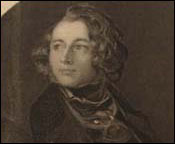|
Stephen A. Schwarzman Building > Collections & Reading Rooms > Berg Collection > Illustrated Presentations When Is a Book Not a Book? Oliver Twist in ContextRobert L. PattenIntroductory Overview Further Reading  Detail of an engraving of Daniel Maclise's 1839 portrait of Charles Dickens One of the best-known novels of the nineteenth-century, Charles Dickens's Oliver Twist is still widely read by adults and schoolchildren alike, but few know its true origins. In this illustrated presentation, Robert L. Patten, professor of English at Rice University, describes the novel's genesis as a serial in the periodical Bentley's Miscellany and examines how serialization influenced its composition. In his exploration of the complicated contexts in which Oliver Twist was created, Patten begins by describing the world of nineteenth-century periodicals and shows how the editors, illustrators, and writers at the Miscellany contributed to Dickens's story and its presentation, making it in fact a work of collaboration by multiple authors. By way of example, he incorporates into this presentation a number of the original drawings for Oliver Twist by one such collaborator, George Cruikshank, whose vivid visual imagination sometimes stimulated Dickens to revise his text. Patten goes on to analyze the ways that periodicals are influenced by their surroundings, forming a dynamic relationship to their times and their readers, in contrast with the fixed boundaries of traditional books. In Oliver Twist, for example, plot and thematic elements relating to crime, loss of identity, and orphanhood reflected sensational topics in the news, as well as Victorian ideological and aesthetic anxieties and debates. Finally, Patten illuminates the position of Oliver Twist in Dickens's literary career and in Bentley's Miscellany itself, showing how the crusading narrative derived part of its meaning and shock value from its juxtaposition with the other, mostly light, humorous, and resolutely nonpolitical articles published in the Miscellany at the time. To the degree that many of these facts and circumstances have been obscured by Oliver Twist's repackaging as a book, its history has been effaced and the true character of its origins has been lost. |